- Home
- Terry Pratchett
The Science of Discworld Page 18
The Science of Discworld Read online
Page 18
Stibbons stared at the notes in front of him.
'I'm ... there's ... it's a puzzler, sir. On a round world the sea just sits there. There's no edge for it to pour off.'
'It's always been believed that the sea is in some way attracted to the moon,' the Senior Wrangler mused. 'You know ... the attraction of serene beauty and so on.'
Dead silence fell.
Finally, Ponder managed: 'No one said anything to me about a moon.'
'You've got to have a moon,' said Ridcully.
'It should be easy, shouldn't it?' said the Dean. 'Our moon goes around the Disc.'
'But where can we put it?' said Ponder. 'It's got to be light and dark, we've got to move it for phases, and it's got to be almost as big as the sun and we know that if you try to make things sun-sized here they, well, become suns.'
'Our moon is closer than the sun,' said the Dean. 'That's why we get eclipses.'
'Only about ninety miles,' said Ponder That's why it's burned black on one side.'
'Dear me, Mister Stibbons, I'm surprised at you,' said Ridcully. 'The damn great sun looks pretty big even though it's a long way away. Put the moon nearer.'
'We've still got the big lump that the Dean knocked out of the planet,' said the Senior Wrangler. 'I made the students park it around the Target.'
'Target?' said Ponder.
'It's the big fat planet with the coloured lines on,' said the Senior Wrangler 'I made them bring the whole lot out to the new, er, sun because frankly they were a nuisance where they were. At least when they're spinning round you know where they're coming from.'
'Are the students still sneaking in here at night to play games?' said Ridcully.
'I've put a stop to that,' said the Dean. 'There's too many rocks and snowballs around this sun in any case. Masses of the things. Such a waste.'
'Well, can we get the lost lump here soon?'
'HEX can manipulate time from Rincewind's point of view,' said Ponder. 'For us, Project time is very fast ... we should get it here before the coffee arrives.'
'Can you hear me, Rincewind?'
'Yes. Any chance of some lunch?'
'We're getting you some sandwiches. Now, can you see the sun properly?'
'It's all very hazy, but yes.'
'Can you tell me what happens if I do ... this?'
Rincewind squinted into the grey sky. Shadows were racing across the landscape.
'You're not going to tell me you've just caused an eclipse of the sun, are you?'
Rincewind could hear faint cheering in the background.
'And you're quite certain it's an eclipse?' said Ponder.
'What else is it? A black disc is covering the sun and there's no birdsong.'
'Is it about the right size?'
'What kind of question is that?'
'All right, all right. Ah, here are your san — what? How? Excuse me ... now what? ...'
The senior wizards were puzzled again, and demonstrated this by prodding Ponder while he was trying to talk. The wizards were great ones for the prod as a means of getting attention.
'You can see there's only one moon,' said the Senior Wrangler, for the third time.
'All right ... how about this?' said Ponder. 'Let us suppose that in some way this world has got both water that likes moons and water that can't stand moons at any price. If it's got about the same amount of both, then that at least explains why there seem to be high tides on both sides at once. I think we can dispose of the Invisible Moon theory, interesting though it was, Dean.'
'I like that explanation,' said Ridcully. 'It is elegant, Mister Stibbons.'
'It's only a guess, sir.'
'Good enough for physics,' said Ridcully.
TWENTY
A GIANT LEAP FOR MOONKIND
HUMANITY HAS ALWAYS KNOWN the Moon is important. It often comes out at night, which is useful; it changes, in a sky where change is rare; some of us believe our ancestors live there. That last one might not be capable of experimental verification, but nevertheless humanity in general got it right. The Moon reaches out ghostly tentacles, gravity and light; it may even be our protector.
The wizards are right to worry that they've forgotten to give Roundworld a Moon, though as usual they're worried for the wrong reasons.
The Moon is a satellite of the Earth: we go round the Sun, but the Moon goes round us. It's been up there for a long time, and in its quiet way it's been exceedingly busy. The Moon affects people as well as baby turtles. The main way it affects us is by causing tides. It may affect us in other, less obvious ways, although many common beliefs about the moon are, to say the least, scientifically controversial. The female menstrual cycle repeats roughly every four weeks, much the same time that it takes the moon to go round the Earth — one month, in fact, a word that comes from 'moon'. In popular belief this numerical similarity is no coincidence, as for example in 'the wrong time of the month'. On the other hand, the Moon is the epitome of regularity, as predictable as the date of Christmas day, which cannot be said of the menstrual cycle.* Lovers, of course, swoon and spoon beneath the Moon in June ... It is also widely held that people go mad when there is a full Moon — or, a more extreme type of madness — those who are suitably afflicted turn into wolves for a night.
The werewolf legend plays a central role in Men at Arms. Most of the time lance-constable Angua of the Ankh-Morpork city watch is a well-built ash-blonde, but when the Moon is full she turns into a wolf who can smell colours and rip out people's jugular veins. But it does play havoc with her private life. 'It was always a problem, growing fangs and hair every full moon. Just when she thought she'd been lucky before, she'd found that few men are happy in a relationship where their partner grows hair and howls.' Fortunately Corporal Carrot is unperturbed by these occasional changes. He likes a girlfriend who enjoys long walks.
The Moon is unusual, and it is quite likely that without it, none of us would be here at all. Not because of the alleged effect on lovers, who find a way Moon or no, but because the Moon protects the Earth from some nasty influences that might have made it difficult for life to have arisen, or at least to have got beyond the most rudimentary forms. What makes the Moon unusual is not that it is a companion to a planet: all of the planets except Mercury and Venus have moons. It is remarkable because it is so big in comparison to its parent planet. Only Pluto has a satellite — Charon, discovered in 1978 by Jim Christy — that is comparable in relative size to our Moon. It's not stretching things much to say that we live on one half of a double planet.
We know the Moon is very different from the Earth in all sorts of ways. Its gravity is weaker, so it wouldn't be able to keep an atmosphere for very long, even if it had one, which it doesn't by any sensible use of the term. The Moon's surface is rock and rock dust, with no seas anywhere (water easily escapes too) — although in 1997 NASA probes discovered substantial quantities of water ice at the Moon's poles, hidden from the warmth of the Sun by the permanent shadows of crater walls. That's good news for future lunar colonies, which could act as bases for the exploration of the solar system. The Moon is a good place to start from, because your spaceship doesn't need much fuel to escape the Moon's pull; the Earth is of course a bad place to start from, because down here gravity is so much stronger. How typical of humans to have evolved in the wrong place ...
How was the Moon formed? Did it condense out of the primal dustclouds along with the Earth? Did it form separately and get captured later? Are the craters extinct volcanoes, or are they marks made by lumps of rock smashing into the Moon? We know rather more about the Moon than we do about most other bodies in the solar system, because we've been there. In April 1969, Neil Armstrong stepped down on to the surface of the Moon, fluffed his lines, and made history. Between 1968 and 1972 the United States sent ten Apollo missions to the Moon and back. Of these, Apollos 8,9, and 10 were never intended to land; Apollo-11 was that historic first landing; and Apollo-13 never made it down to the surface, suffering a disastrous explos
ion early in its flight and turning into an excellent movie.
The rest of Apollos 11-17 landed, and between them they brought back 800 lb (400 kg) of moon rock. Most of it is still stored in the Lunar Curatorial Facility in NASA's Johnson Space Center at Clear Lake, Houston; a lot of it has never been seriously looked at at all, but what has been analysed has taught us a lot about the origins and nature of the Moon.
The Moon is about a quarter of a million miles (400,000 km) from the Earth. It is less dense than the Earth, on average, but the Moon's density is very similar to that of the Earth's mantle, a curious fact that may not be coincidence. The same side of the Moon always faces the Earth, though it wobbles a bit. The dark markings on it are called maria — Latin for 'seas', but they're not. They're flattish plains of rock which at one time was molten and flowed across the lunar surface like lava from a volcano. Nearly all of the craters are impact craters, where meteorites have smashed into the Moon. There are lots of them because there's a lot of rocks floating about in space, the Moon has no atmosphere to shield it by burning up the rocks through frictional heating, and the Moon has no weather to grind them back down again until they disappear. The Earth's atmosphere is a pretty good shield, but once geologists started looking they found remains of 160 impact craters down here, which is interesting given that a lot of them will have eroded away in the wind and the rain. But more of that when we get to dinosaurs.
Today the Moon always turns the same face to the Earth, which means that it rotates once round its axis every month, the same time that it takes to revolve around the Earth. (If it didn't rotate at all, it would always be pointing in the same direction — not the same direction relative to the Earth, but the same direction period. Imagine someone walking round you in a circle but always facing north, say. Then they don't always face you. In fact, you see all sides of them.) It wasn't always like this. Over hundreds of millions of years, the effect of tides has been to slow down the rotation rates of both Earth and Moon. Once the moon's rotation became synchronized with its revolutions round the Earth, the system stabilized. The moon also used to be quite a bit closer to the Earth, but over long periods of time it has moved further and further out.
Between 1600 and 1900 three theories of the formation of the Moon came into vogue and out again. One was that the Moon had formed at the same time as the Earth when the dustcloud condensed to form the solar system — Sun, planets, satellites, the whole ball of wax ... or rock, anyway. This theory, like early theories of the solar system's formation, falls foul of angular momentum. The Earth is spinning too fast, and the moon is revolving too fast, to be consistent with the Moon condensing from a dustcloud. (We misled you earlier when we said that the dustcloud theory explained the satellites too. Mostly it does, but not our enigmatic Moon. Lies-to-children, you see — now you're ready for the next layer of complication.)
Theory two was that the Moon is a piece of the Earth that broke away, maybe when the Earth was still completely molten and spinning rather fast. That theory bounced into the bin because nobody could find a pkusible way for a spinning molten Earth to eject anything that would remotely resemble the Moon, even if you waited a bit for things to cool down.
According to theory three, the Moon formed elsewhere in the solar system, and was wandering along when it happened to come within the Earth's gravitational clutches and couldn't get out again. This theory was very popular, even though gravitational capture is distinctly tricky to arrange. It's a bit like trying to throw a golfball into the hole so that it goes round and round just inside the rim. What usually happens is that it falls to the bottom (collides with the Earth) or does what every golfer has experienced to their utter horror, and goes in for a split second before climbing back out again (escapes without being captured).
The rock samples from Apollo missions added to the mystery of the Moon's origins. In some respects, Moon rock is astonishingly similar to Earth rock. If they were similar in most respects, this would be evidence for a common origin, and we'd have to take another look at the theory that they both condensed from the same dustcloud. But Moon rock doesn't resemble all Earth rock, only the mantle. The current theory, which dates from the early 1980s, is that the Moon was once part of the Earth's mantle. It wasn't ejected as a result of the Earth's spin: it was knocked into space about four billion years ago when a giant body, about the size of Mars, struck the early Earth a glancing blow. Computer calculations show that such an impact can, if conditions are right, strip a large chunk of mantle from the Earth, and sort of smear it out into space. This takes about 13 minutes (aren't computers good?). Then the ejected mantle, which is molten, begins to condense into a ring of rocks of various sizes. Some of it forms a big lump, the proto-Moon, and this quickly sweeps up most of the rest. What's left doesn't go away so easily, however, but over 100 million years nearly all of it crashes into either the Moon or the Earth, because of gravity.
The first simulations to support this theory of the Moon’s formation suffered from some problems; in particular, they dated the impact very early in the Earth’s formation, in order to get the Moon’s angular momentum right. But if the collision had occurred that early, then the Moon would have accumulated a lot of iron from later impacts, just as the Earth did. However, there is little iron on (or in) the Moon. More recent work shows that a rather later impact could also give the Moon the correct angular momentum, and avoids this difficult. However, it predicts that about 80% of the impacting body would have ended up on the Moon. In order for the Moon to resemble Earth’s mantle as closely as it does, the impacting body would also have had to resemble the Earth’s mantle.
This line of reasoning may be losing the plot, though, because it was that very resemblance that needed explanation in the first place, and gave rise to the giant impact theory of the Moon’s formation. Anything that explains why the impactor was like the mantle, such as 'it was formed at the same distance from the Sun as the Earth did, ' can probably explain why the Moon is like the mantle, without an impactor being needed. Maybe both the Moon and the Earth’s mantle were splashed off something else by an impact.
Because Earth has weather — especially back then, oh boy, did it have weather then — the resulting impact craters all got eroded away; but because the Moon has no weather, the lunar impact craters didn't get eroded away, and a lot of them are still there now. The great charm of this theory is that it explains many different features of the Moon in one go — its similarity to the Earth's mantle, the fact that its surface seems to have undergone a sudden and extreme amount of heating about 4 billion years ago, its craters, its size, its spin — even those sea-like maria, released as the proto-Moon slowly cooled. The early solar system was a violent place.
In fact, the Dean's mis-designed sun might have done us some good after all ...
The Moon affects life on Earth in at least two or three ways that we know of, probably dozens more that we haven't yet appreciated.
The most obvious effect of the Moon on the Earth is the tides — a fact that the wizards are stumbling towards. Like most of science, the story of the tides is not entirely straightforward, and only loosely connected to what common sense, left to its own devices, would lead us to expect. The common sense bit is that the Moon's gravity pulls at the Earth, and it pulls more strongly on the bit that is closest to the Moon. When that bit is land, nothing much happens, but when it's water — and more than half our planet's surface is ocean — it can pile up. This explanation is a lie-to-children, and it doesn't agree with what actually happens. It leads us to expect that at any given place on Earth, high tide occurs when the Moon is overhead, or at least at its highest point in the sky. That would lead to one high tide every day, or, allowing for a little complexity in the Earth-Moon system, one high tide every 24 hours 50 minutes.
Actually, high tides occur twice a day, 12 hours and 25 minutes apart. Exactly half the figure.
Not only that: the pull of the Moon's gravity at the surface of the Earth is only one ten million
th of the Earth's surface gravity; the pull of the Sun is about half that. Even when combined together, these two forces are not strong enough to lift masses of water through heights of up to 70 feet (21m) — the biggest tidal movement on Earth, occurring in the Bay of Fundy between Nova Scotia and New Brunswick.
An acceptable explanation of the tides eluded humanity until Isaac Newton worked out the law of gravity and did the necessary calculations. His ideas have since been refined and improved, but he had the basics.
For simplicity, ignore everything except the Earth and the Moon, and assume that the Earth is completely made of water. The watery Earth spins on its axis, so it is subjected to centrifugal force and bulges slightly at the equator. Two other forces act on it: the Earth's gravity and the Moon's. The shape that the water takes up in response to these forces depends on the fact that water is a fluid. In normal circumstances, the surface of a standing body of water is horizontal, because if it wasn't, then the fluid on the higher bits would slosh sideways into the lower bits. The same kind of thing happens when there are extra forces acting: the surface of the water settles at right angles to the net direction of the combined forces.
When you work out the details for the three forces we've just mentioned, you find that the water forms an ellipsoid, a shape that is close to a sphere but very slightly elongated. The direction of elongation points towards the Moon. However, the centre of the ellipsoid coincides with the centre of the Earth, so the water 'piles up' on the side furthest from the Moon as well as on the side nearest it. This change of shape is only partly caused by the Moon's gravity 'lifting' the water closest to it. Most of the motion, in fact, is sideways rather than upwards. The sideways forces push more water into some regions of the oceans, and take it away from others. The total effect is tiny — the surface of the sea rises and falls through a distance of 18 inches (half a metre).

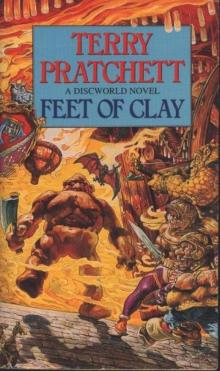 Feet of Clay
Feet of Clay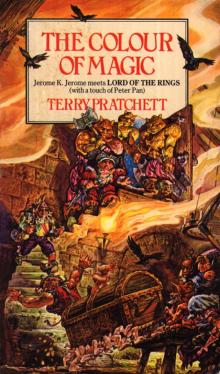 The Color of Magic
The Color of Magic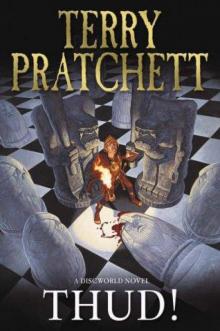 Thud!
Thud! Good Omens: The Nice and Accurate Prophecies of Agnes Nutter, Witch
Good Omens: The Nice and Accurate Prophecies of Agnes Nutter, Witch I Shall Wear Midnight
I Shall Wear Midnight Mort
Mort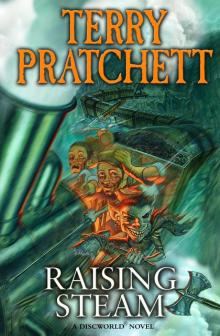 Raising Steam
Raising Steam Guards! Guards!
Guards! Guards! Equal Rites
Equal Rites A Hat Full of Sky
A Hat Full of Sky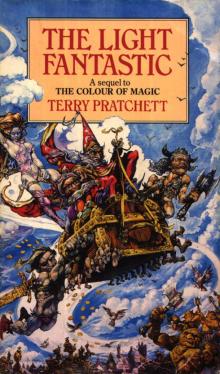 The Light Fantastic
The Light Fantastic Mrs Bradshaw's Handbook
Mrs Bradshaw's Handbook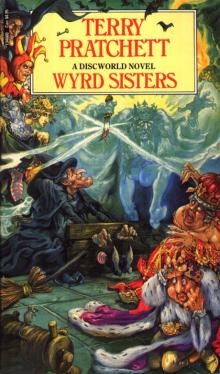 Wyrd Sisters
Wyrd Sisters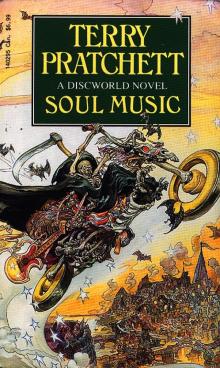 Soul Music
Soul Music Small Gods
Small Gods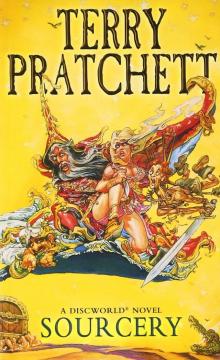 Sourcery
Sourcery Reaper Man
Reaper Man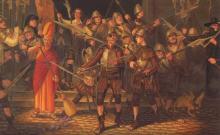 Night Watch
Night Watch Lords and Ladies
Lords and Ladies The Fifth Elephant
The Fifth Elephant Monstrous Regiment
Monstrous Regiment The Truth
The Truth Witches Abroad
Witches Abroad Eric
Eric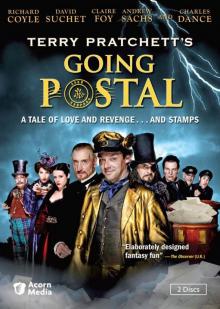 Going Postal
Going Postal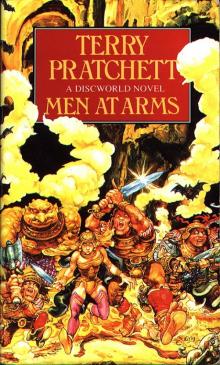 Men at Arms
Men at Arms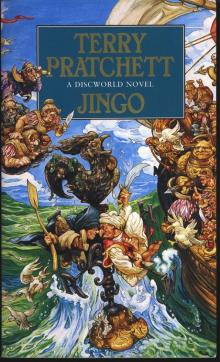 Jingo
Jingo The Amazing Maurice and His Educated Rodents
The Amazing Maurice and His Educated Rodents The Wee Free Men
The Wee Free Men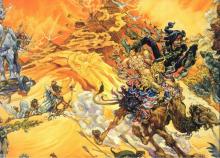 Pyramids
Pyramids Wintersmith
Wintersmith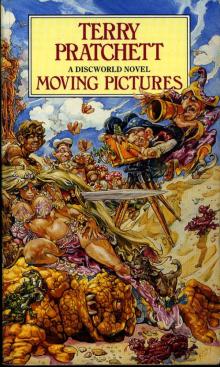 Moving Pictures
Moving Pictures Carpe Jugulum
Carpe Jugulum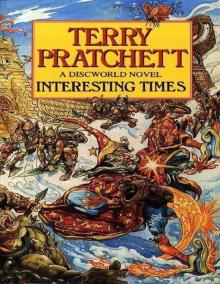 Interesting Times
Interesting Times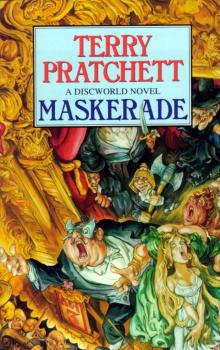 Maskerade
Maskerade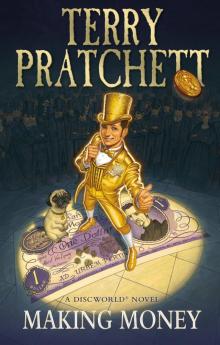 Making Money
Making Money The Shepherd's Crown
The Shepherd's Crown Hogfather
Hogfather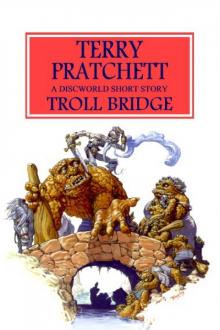 Troll Bridge
Troll Bridge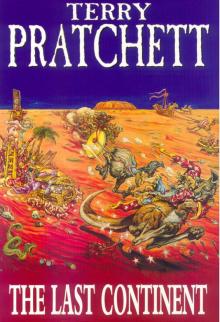 The Last Continent
The Last Continent The Sea and Little Fishes
The Sea and Little Fishes Snuff
Snuff Unseen Academicals
Unseen Academicals Guards! Guards! tds-8
Guards! Guards! tds-8 Jingo d-21
Jingo d-21 Turtle Recall: The Discworld Companion ... So Far
Turtle Recall: The Discworld Companion ... So Far The Fifth Elephant d-24
The Fifth Elephant d-24 Discworld 39 - Snuff
Discworld 39 - Snuff The Long War
The Long War Only You Can Save Mankind
Only You Can Save Mankind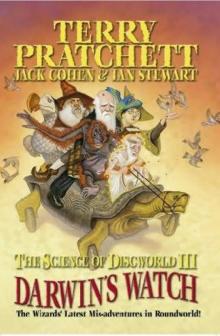 The Science of Discworld III - Darwin's Watch tsod-3
The Science of Discworld III - Darwin's Watch tsod-3 A Blink of the Screen: Collected Short Fiction
A Blink of the Screen: Collected Short Fiction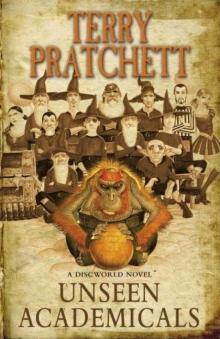 Unseen Academicals d-37
Unseen Academicals d-37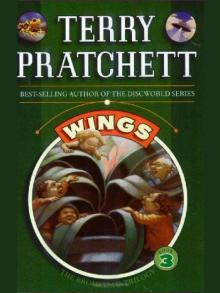 Wings
Wings Making Money d-36
Making Money d-36 A Blink of the Screen
A Blink of the Screen Johnny and the Bomb
Johnny and the Bomb Dodger
Dodger Strata
Strata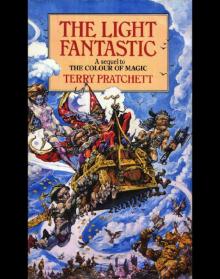 Discworld 02 - The Light Fantastic
Discworld 02 - The Light Fantastic The Folklore of Discworld
The Folklore of Discworld The Science of Discworld
The Science of Discworld The Unadulterated Cat
The Unadulterated Cat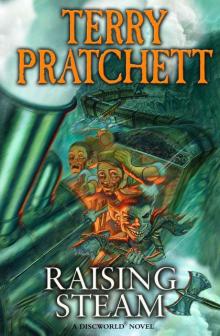 Raising Steam: (Discworld novel 40) (Discworld Novels)
Raising Steam: (Discworld novel 40) (Discworld Novels) The World of Poo
The World of Poo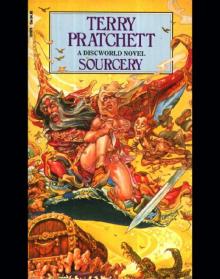 Discworld 05 - Sourcery
Discworld 05 - Sourcery The Witch's Vacuum Cleaner: And Other Stories
The Witch's Vacuum Cleaner: And Other Stories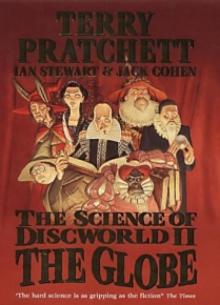 The Science of Discworld II - The Globe tsod-2
The Science of Discworld II - The Globe tsod-2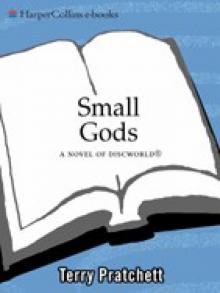 Small Gods: Discworld Novel, A
Small Gods: Discworld Novel, A Men at Arms tds-15
Men at Arms tds-15 Tama Princes of Mercury
Tama Princes of Mercury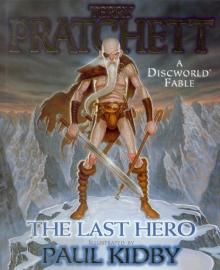 The Last Hero (the discworld series)
The Last Hero (the discworld series) The Long Utopia
The Long Utopia Discworld 03 - Equal Rites
Discworld 03 - Equal Rites Terry Pratchett - The Science of Discworld
Terry Pratchett - The Science of Discworld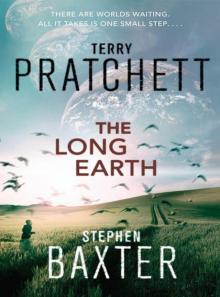 The Long Earth
The Long Earth The Carpet People
The Carpet People The Sea and Little Fishes (discworld)
The Sea and Little Fishes (discworld) The Colour of Magic
The Colour of Magic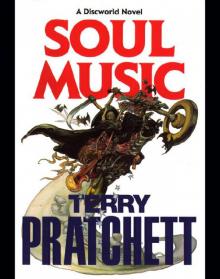 Discworld 16 - Soul Music
Discworld 16 - Soul Music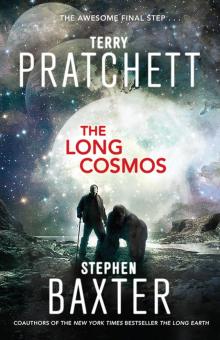 The Long Cosmos
The Long Cosmos The Dark Side of the Sun
The Dark Side of the Sun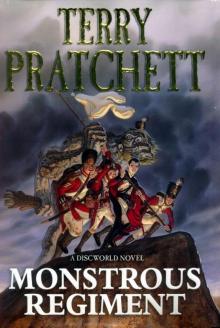 Monstrous Regiment tds-28
Monstrous Regiment tds-28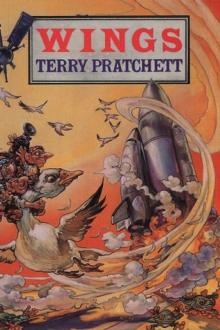 The Bromeliad 3 - Wings
The Bromeliad 3 - Wings Dragons at Crumbling Castle: And Other Stories
Dragons at Crumbling Castle: And Other Stories Night Watch tds-27
Night Watch tds-27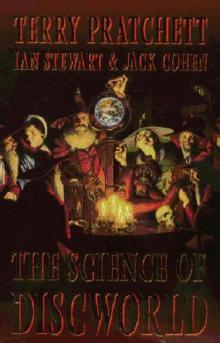 The Science of Discworld I tsod-1
The Science of Discworld I tsod-1 The Bromeliad 1 - Truckers
The Bromeliad 1 - Truckers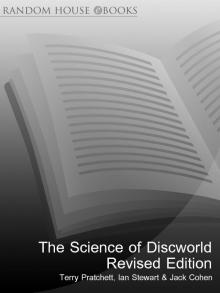 The Science of Discworld Revised Edition
The Science of Discworld Revised Edition The Abominable Snowman
The Abominable Snowman Father Christmas’s Fake Beard
Father Christmas’s Fake Beard The Bromeliad Trilogy
The Bromeliad Trilogy A Slip of the Keyboard
A Slip of the Keyboard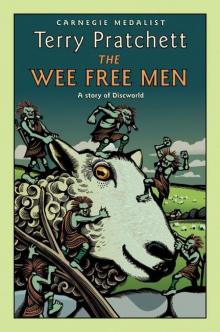 The Wee Free Men d(-2
The Wee Free Men d(-2 Johnny and the Dead
Johnny and the Dead Mrs Bradshaw's Handbook (Discworld Novels)
Mrs Bradshaw's Handbook (Discworld Novels)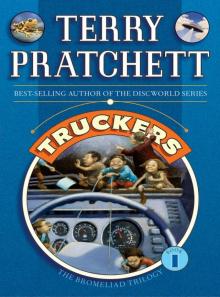 Truckers
Truckers The Amazing Maurice and His Educated Rodents d(-1
The Amazing Maurice and His Educated Rodents d(-1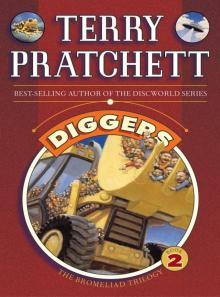 Diggers
Diggers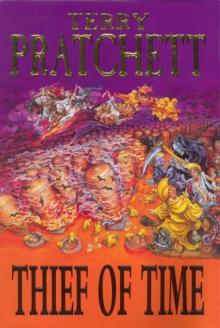 Thief of Time tds-26
Thief of Time tds-26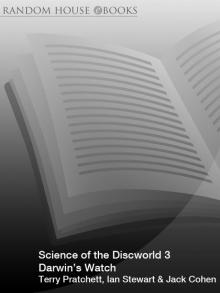 Science of Discworld III
Science of Discworld III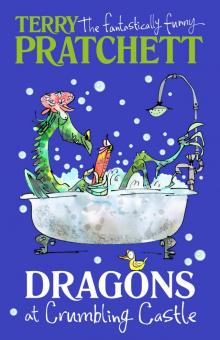 Dragons at Crumbling Castle
Dragons at Crumbling Castle Nation
Nation Darwin's Watch
Darwin's Watch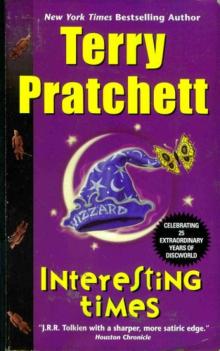 Interesting Times d-17
Interesting Times d-17 The Bromeliad 2 - Diggers
The Bromeliad 2 - Diggers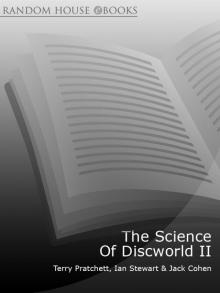 The Science of Discworld II
The Science of Discworld II